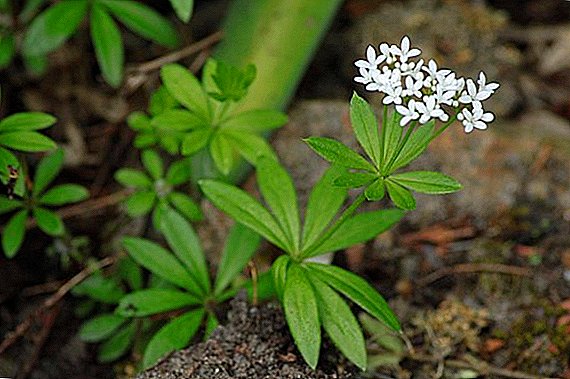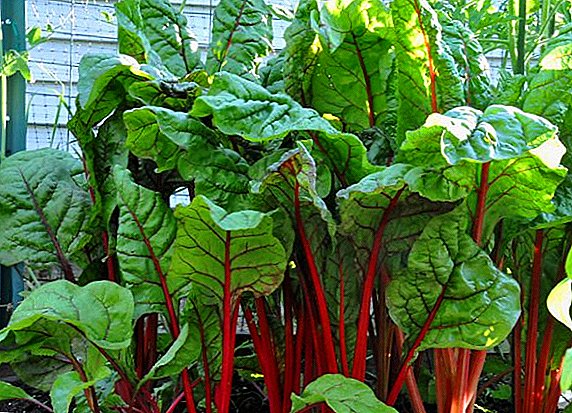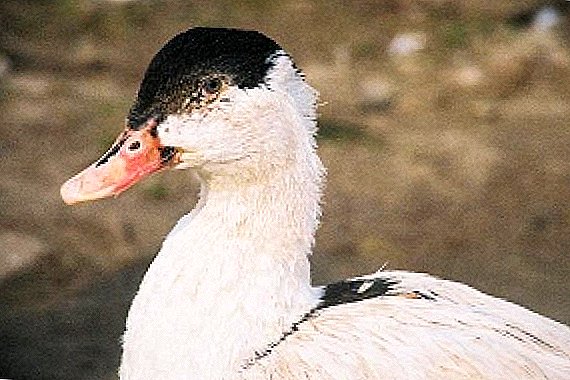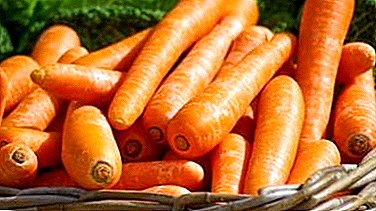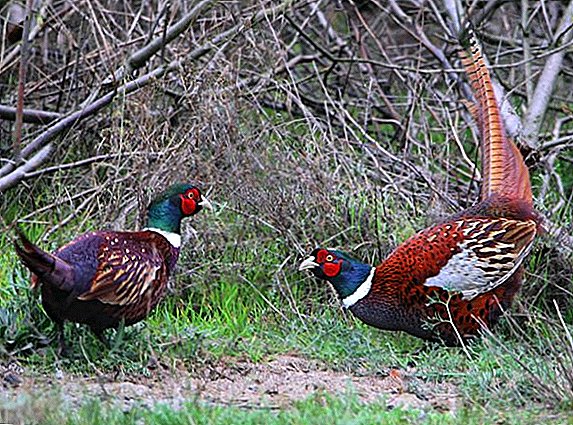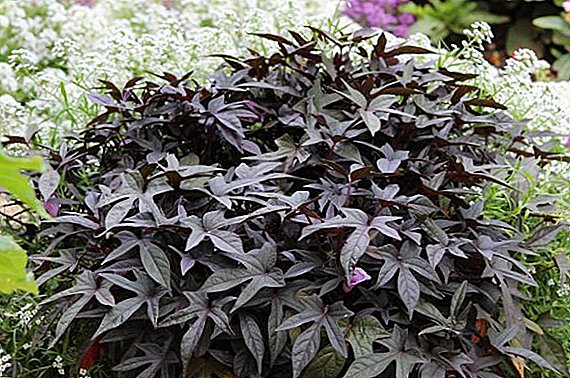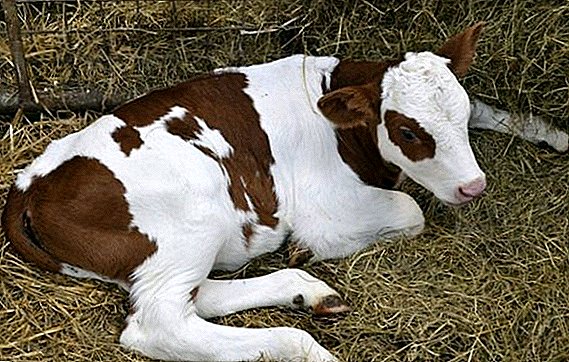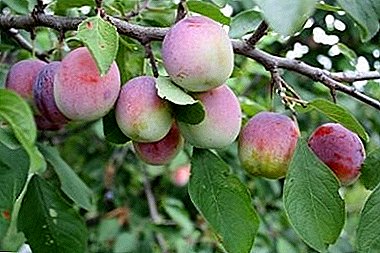
It is difficult to imagine a garden without a plum; it always attracted attention with its unpretentiousness and remarkable taste.
For a long time, the gardens of each region inhabited the same type of varieties, zoned with maximum adaptation to climatic conditions, but they are not pleased with the variety.
At the present time, thanks to modern science, the varietal composition has been significantly enriched, new interesting developments appear.
Description of plum Hungarian Korneevskaya
Interesting developments include a variety plums "Hungarian Korneevskaya".
"Hungarian Korneevskaya" - plum variety with ripening in the second half of August, large-fruited - the average weight of blue-violet, with a strong wax coating of fruits is 135-140 grams.
Pulp yellow, juicy, sweet, for a wonderful taste the variety deserves to be dessert.
Bone medium size, easily separated from the pulp, the juice is yellow.
Tree varieties "Hungarian Korneevskaya" has an average growth power, an oval, without thickening, crown, a dark green leaf with a bright underside, a rough gray trunk and skeletal branches.
Blooms plum in early May small white flowers, single or collected two, three, fruiting stable.
The yield of such strength that the failure of a variety is considered to be branch fractures under its weight.
Plum varieties "Hungarian Korneevskaya" samoplodna, comes into fruiting at 3 or 4 years after planting at one-year age, it should be noted good tolerability of low and high temperatures, drought tolerance and weak susceptibility diseases.
A photo
Visually see the variety of plums "Hungarian Korneevskaya" on a photo below:




Variety selection
Variety “Hungarian Korneevskaya” - a hybrid of the varieties “Bogatyrskaya” and “Volgogradskaya”, it was bred by employees of the Nizhnevolzhskiy NIISH L.N. Zhukov and R.V. Korneev.
Landing
For planting it is better to choose a single or biennial plant, it will easily transfer the transplant, the root system of the young seedling is developed in proportion to the crown and the plant quickly takes root in a new place.
It is possible to plant a plum in spring and autumn, a tree planted in spring manages to take root, grow shoots, prepare for winter, autumn planting does not guarantee successful rooting, and consequently, wintering.
It is better not to risk, prikopat seedlings, placing the roots in shallow trenches, and leave the trunk and crown above the soil surface at an angle of 45 degrees.
In spring, young plants are transferred to a permanent place.
Choosing a place to plant a plum is a matter of responsibility, and the health of the tree, the yield and the quality of the fruit depend on whether it is in its place of discharge.
In the event that flooding is possible, it is necessary to arrange drainage grooves, and the landing pits should be dug in ridges or hills.
For the construction of a ridge or a hill, large debris will be required for the base, smaller for the middle part and fertile soil for the upper part. The hill or ridge should be no less than 50 centimeters, not more than one meter.
 The landing pit should not be smaller than 80 centimeters, and its diameter should not be less than 50 to 50 centimeters.
The landing pit should not be smaller than 80 centimeters, and its diameter should not be less than 50 to 50 centimeters.
One planting pit needs a bucket of humus, 2 handfuls of superphosphate, a handful of potassium salts and a shovel of wood ash, one sapling up to two buckets of water.
Before planting, the roots are carefully inspected, damaged, rotted are removed, the soil is constantly compacted, air pockets should not be allowed - roots will rot and the plant will die.
The root neck should be 5 centimeters above the level of the soil, when watering the soil will settle and the root neck will fall into place.
A sapling is plentifully watered, a stake is driven into the center of the planting hole, but without harm to the sapling, and a young plant is tied loosely to it with string.
Pruning
Before the start of fruiting is carried out formative and sanitary pruning, they are replaced by sanitary annual pruning, it is replaced by an annual rejuvenating pruning.
Lives plum variety "Hungarian Korneevskaya" up to 20 years.
Top dressing
Fertilizers applied during planting are enough for several years, organic matter is not applied more than once every three years, mineral fertilizers can be applied more often if, in your opinion, the seedling suffers from their lack.
Well-proven foliar top dressing. Preparations Ecolist, Adob, Crestalon, Solyubor perfectly proved themselves, their action is aimed at strengthening the immunity of the plant, improving the quality of the crop.
Diseases and pests: control and prevention
Preventive measures in the fight against diseases and pests is proper care for plum trees, annual sanitary pruning excludes thickening of the crown, (with normal ventilation, fungal diseases do not develop), spring cleaning trunk and skeletal branches from the dead bark with further whitewashing protects the plant from wintering under the old bark of pests, diseases, fungi and lichens.
It is better to whitewash yourself from equal parts of lime and clay with the addition of 100 grams of ferrous sulfate on a bucket of water, the solution for whitewashing should have the consistency of liquid sour cream.
 The destruction of insect pests is also the prevention of disease, insects are carriers of spores of fungal infections, and the collection and destruction of dead foliage saves the garden from insect pests that hibernate in it.
The destruction of insect pests is also the prevention of disease, insects are carriers of spores of fungal infections, and the collection and destruction of dead foliage saves the garden from insect pests that hibernate in it.
But if there are too many insects and you are not sure that preventive measures are not enough, sprinkle the plants any insecticides before flowering and after flowering plum.
Plum variety "Hungarian Korneevskaya" has good immunity and this should be taken into account, there will be no need in a well-kept garden for intensive processing.
The plum variety “Hungarian Korneevskaya” is almost devoid of flaws, large fruits have dessert tasteyields stable and very high, precociousness and self-fertility compares favorably from many other varieties, and besides unpretentious, easily tolerates harsh winters and summer drought, disease resistant. Not a variety, but a gardener's dream.


